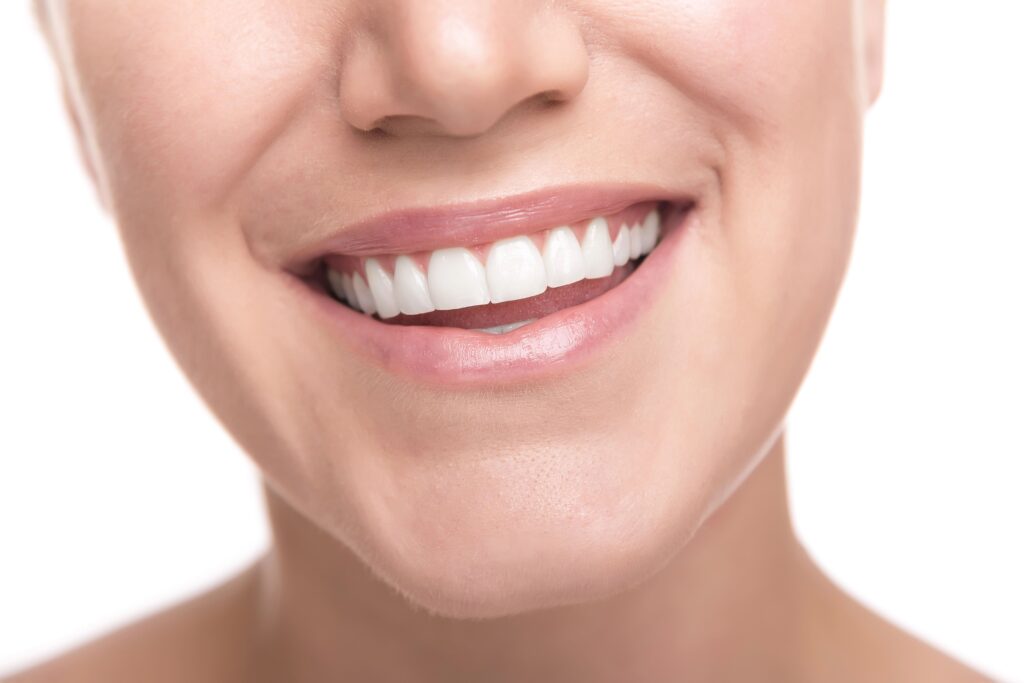If you’re dreaming of a smile makeover that goes beyond teeth whitening, you might be pointed toward dental bonding or veneers. Both treatments can correct a variety of cosmetic issues, including chips, gaps, stains, and discoloration. However, they’re also quite different, especially when it comes to the process, level of invasiveness, and overall cost. Teeth bonding vs. veneers: which option is best for you? To help you decide, let’s explore the key similarities and differences between these two common cosmetic procedures. That way, you can head into your dentist’s office with confidence.
Choosing Between Bonding and Veneers
The Issues Treated
Both bonding and veneers can correct smile imperfections. However, bonding is typically used for minor issues. For example, it might be used to correct a chip, a small crack, minor discoloration, a slight gap, or uneven teeth. Bonding is an excellent option if you’re only concerned about one or two teeth. Veneers, on the other hand, are a popular choice for those wanting a fully revamped smile. The thin shells completely cover your natural teeth, so they’re a good option for larger gaps or more significant cosmetic concerns. They can also be used to correct small issues affecting just one or two teeth; however, this is less common because it can be tricky to match a single veneer to your other teeth.
The Treatment Process
While they can correct similar dental issues, bonding and veneers have drastically different procedures.
Bonding is quick and minimally invasive. During the treatment, which often requires just one appointment, your dentist will lightly roughen the enamel of your tooth before applying a composite resin that matches your natural teeth. After the resin has been carefully shaped, a special light will harden it. It’s as simple as that!
Veneers, on the other hand, typically require multiple appointments and a more invasive procedure. Your dentist must remove a layer of enamel from the teeth, making this an irreversible procedure. After that, your dental team will take impressions of your teeth, which will be used to make your custom veneers. In the meantime, you will wear temporary veneers to protect your teeth. Finally, your dentist will bond your final veneers to the front of your teeth using a special dental cement. The veneers will match your natural teeth in shape, color, and fit, and your dentist can shape and trim them as needed to ensure they’re comfortable and attractive.
The Cost & Durability
Bonding is more affordable than veneers. Typically, bonding might cost up to a few hundred dollars, whereas veneers could cost a few thousand dollars. However, when thinking about pricing, it’s important to consider durability and how frequently the treatment will require replacement. Bonding might last 3–7 years, while veneers can last 10–20 years. While veneers have a higher upfront cost, they also last much longer.
The Final Result
Bonding and veneers both provide fantastic results if you work with a skilled, knowledgeable, and reliable dentist. They can provide you with a natural and beautiful smile.
However, it’s important to note that bonding is more prone to staining than veneers. Over time, certain foods or drinks may stain your bonded tooth. If you’re concerned about this, be diligent about your oral hygiene, schedule regular dentist appointments, and minimize your consumption of staining substances. Bonding resin can also dull over time, and it may not match the exact sheen and shape of real enamel.
High-quality veneers are known to provide a more natural smile because they’re custom-designed in a lab, and the material (especially porcelain) is typically a better match for real enamel. Veneers also provide long-lasting stain resistance; however, your natural teeth may still become stained, and this might mean that your veneers no longer blend in with your natural teeth. Again, maintaining your personal oral hygiene routine, scheduling regular check-ups, and avoiding staining agents are essential if you want to maintain a uniformly bright smile.
_____
Teeth bonding vs. veneers: which option will you choose? Before you make your final decision, be sure to consult with your dental team so that you fully understand how these treatments will work with your unique smile.
If you’re looking for an experienced, reliable, and friendly dentist in or near Springfield, Missouri, contact Wilkinson Dental. Our team will give you the personalized treatment you deserve using state-of-the-art technology. Schedule your first appointment today by calling 417-708-0556 or requesting an appointment online. We look forward to hearing from you!
